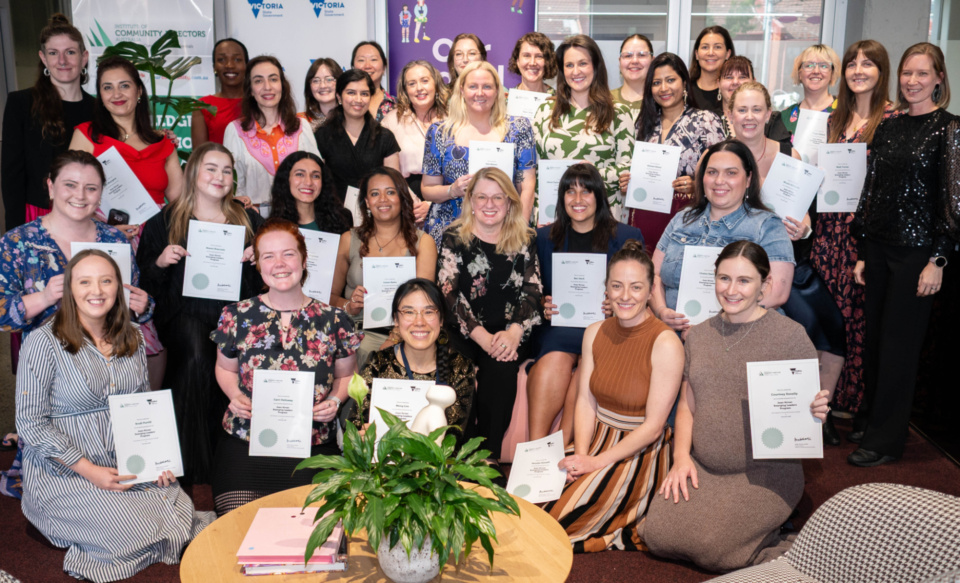
Why meetings can harm employee well-being
Posted on 10 Dec 2025
Anyone working in an organisation knows it: meetings follow one after another at a frantic pace. On…
Posted on 12 Jun 2024
By Professor David Gilchrist, Centre for Public Value, University of Western Australia

The end-of-year reporting process and the audit that comes with it are often seen as a challenging period. This is understandable because charities’ and nonprofits’ volunteers and staff rarely have sufficient time to undertake their day-to-day activities let alone add to them.
However, the audit process can actually be an invaluable one that supports voluntary directors and the executive if approached correctly.

The audit process involves time and cost to the audited organisation as staff and volunteer board members must allocate time to work with the auditors to meet their needs to get the job done. This is especially the case if your organisation’s rules or constitution require an audit to be undertaken or if your organisation is a large registered charity turning over $3 million or more annually. If your organisation’s rules do not require an audit or if the organisation is not a large registered charity, you do not need an audit. However, you may need to have a review if your organisation is a medium charity turning over between $500,000 and $3 million. If you are a small registered charity and your constitution or rules do not require it, you do not need an audit or review. For registered associations, different states have different requirements.
A review is similar to an audit but generally costs less and takes less time. A review can be undertaken by a member of an accounting professional body or by an auditor. However, a review provides limited assurance in relation to your financial report. An auditor provides greater assurance or comfort. The ACNC website has important information pertaining to this issue.
Regardless of whether your organisation has a review or an audit, there are great opportunities during this process for the board and executive to gain confidence in their operations and to identify areas where they can do better—and not just in relation to financial reporting. Working with the auditor, you can develop a longer-term audit plan that focuses on broader issues and allows you to have an independent party investigate and evaluate key threats to sustainability.

Rather than expecting every board member to sit on an audit committee, your board could consider creating an audit committee made up largely of members who have audit and accounting experience but who do not sit on the board.
This structure is a good way to recruit volunteer board members over time, and for accounting professionals it is often more attractive than conventional board membership, because it allows them to contribute without having to invest time and money in growing their knowledge base. This structure will also assist greatly when it’s time for your organisation to evaluate your auditor and appoint a new auditor, which ought to be done at least every five years.
The audit committee can assess financial and other risks and work with the auditor to create a three- to five-year audit plan (depending on how long the auditor is appointed for). Such a plan can examine additional risks associated with the organisation’s operations on a rotational basis without increasing costs significantly.
For instance, auditors are generally competent at reviewing the extent to which board policies are actually being applied correctly. This can be very important where the organisation provides care services, and where harm can come to clients and staff if things are not done correctly. The auditor can also be asked to contribute ideas to the audit plan, as they will have a view of the risks associated with your entity.
The audit committee can call on the auditor to provide accounting and reporting updates to ensure the organisation understands how changes to the law, regulations, accounting standards and auditing processes may affect the organisation.
It sounds like overkill, but the better your organisation understands reporting and auditing processes, the better it is able to respond quickly and effectively to sustainability threats, and the more likely it is to be financially sound. You have to know what the threats are and what trouble they can cause if you are to manage them effectively.
The audit committee should meet with the board at least once per year and then at the end of the audit process to report directly to all board members and give them the chance to make observations and ask questions.
When the board meets with the auditor, it should do so initially with the executive and then without the executive to ensure the auditor is able to report fully and openly. If you have a members’ AGM, the auditor should also be given the chance to report directly to members as this gives them greater confidence in the board and makes its operations more transparent.
When the board meets with the auditor, they should ask the following as standard questions:
Once the meeting has taken place, the minutes (which detail the questions and answers) should be forwarded to the auditor for confirmation. It is not necessary to send all of the minutes, just an extract signed by the chair and approved by the board.
Finally, volunteer directors must remember that the end-of-year financial report is their report and so they must understand what it says and why. Having access to the auditor is a critical step in developing this understanding, which, in turn, helps greatly in gaining an understanding of the sustainability of your organisation.
The audit process can be complex, and gaining experience in its operation is critical to ensuring volunteer board members and executives are able to work with the auditor to ensure ongoing sustainability. If you approach the process positively it can return significant opportunities for improvement and confirmation each year.
Hear more of Professor Gilchrist's advice during NFP Finance Week (Sept)
How to animate your annual report
Good financial and HR health will keep NFPs afloat
Tool: Annual board and compliance calendar template
Help sheet: Navigating the key documents
Check lists: 10 key considerations for publishing annual reports | Making sure your annual report is complete
Video: Accounting as a language (Right Source)

Posted on 10 Dec 2025
Anyone working in an organisation knows it: meetings follow one after another at a frantic pace. On…

Posted on 10 Dec 2025
As a qualified yoga instructor who learned the practice in her hometown of Mumbai, Ruhee Meghani…

Posted on 10 Dec 2025
Community Directors trainer Jon Staley knows from first-hand experience the cost of ignoring…

Posted on 10 Dec 2025
Stressed, overwhelmed, exhausted… if you’re on a not-for-profit board and these words sound…

Posted on 10 Dec 2025
The Institute of Community Directors Australia trains over 22,000 people each year, which gives us…

Posted on 03 Dec 2025
Many not-for-profit (NFP) board members in Australia are burnt out, overwhelmed and considering…

Posted on 26 Nov 2025
A roll call of Victoria’s brightest future leaders has graduated from a testing and inspiring…

Posted on 12 Nov 2025
At the Institute of Community Directors Australia, we believe that stronger communities make a…

Posted on 12 Nov 2025
Like many Community Directors members, Hazel Westbury is a community leader who isn’t easily…

Posted on 11 Nov 2025
I’ve seen what happens when fear of conflict wins out over taking a principled stand.

Posted on 11 Nov 2025
‘It’s not a question of enough, pal. It’s a zero-sum game. Somebody wins and somebody loses’.

Posted on 11 Nov 2025
Progressive economic Richard Denniss believes the constant hunt by governments for the political…